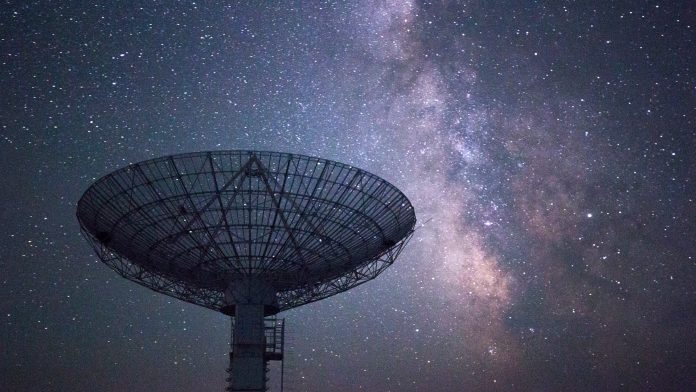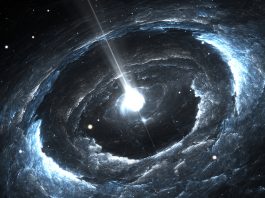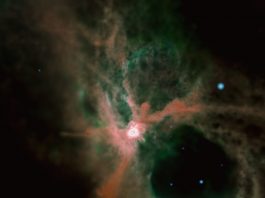A research team from Leibniz Institute for Astrophysics Potsdam has investigated the link between star formation and radio emission.
Fifty years ago, scientists observed a connection between star formation in galaxies and infrared radio radiation. Now, scientists from Leibniz Institute for Astrophysics Potsdam (AIP) have deciphered the fundamental physics to explain this relationship. In order to do this, AIP researchers employed novel computer simulations of galaxy formation with complete modelling of cosmic rays.
Understanding the formation of galaxies
Scientists noted that knowing the amount of newly formed stars in both nearby and distant galaxies was important in understanding the formation and evolution of galaxies. Thus, to understand this formation, astronomers typically utilise the link between the infrared and radio radiation of galaxies discovered five decades ago.
The energetic radiation of young, massive stars that form in the densest regions of galaxies is absorbed by surrounding dust clouds and re-emitted as low-energy infrared radiation. Ultimately, when their fuel supply has depleted, these massive stars explode as supernovae at the end of their lives. During the explosion, the outer stellar envelope is ejected into the environment, which accelerates a few particles of the interstellar medium to very high energies, giving rise to cosmic rays.
In the galaxy’s magnetic field, these fast particles are travelling at nearly the speed of light and emit very low-energy radio radiation with a wavelength of a few centimetres to metres. Through this chain of processes, newly-forming stars, infrared radiation, and radio radiation from galaxies are closely associated.
Determining an explanation for the link between star formation and radio emission
This relation is often utilised in astronomy, however, the exact physical conditions are not yet clear. Past efforts to explain this have continually failed when considering how if high-energy cosmic rays are indeed responsible for the radio radiation of these galaxies, the theory predicts very steep radio spectra – high emission at low radio frequencies – that do not match observations.
To understand this mysterious phenomenon, AIP researchers have now, for the first time, realistically simulated these processes of a forming galaxy on a computer and calculated the cosmic ray energy spectra.
“During the formation of the galactic disk, cosmic magnetic fields are amplified so that they match the strong observed galactic magnetic fields,” explained Professor Christoph Pfrommer, head of Cosmology and High-Energy Astrophysics at AIP.
Scientists discovered that when cosmic ray particles in magnetic fields emit radio radiation, it loses part of its energy on its journey. As a result, the radio spectrum becomes flatter at low frequencies. Thus, at high frequencies, in addition to the radio emission of cosmic rays, the radio emission of the interstellar medium, which has a flatter spectrum, also contributes to the process.
The sum of these two processes can therefore plausibly explain the observed flat radio radiation of the whole galaxy as well as the emission of the central regions. This also explains the mystery of why the infrared and radio radiation of galaxies are linked so closely together.
“This allows us to better determine the number of newly formed stars from the observed radio emission in galaxies, which will help us to further unravel the story of star formation in the Universe,” concluded Maria Werhahn, first author and PhD student at AIP.









